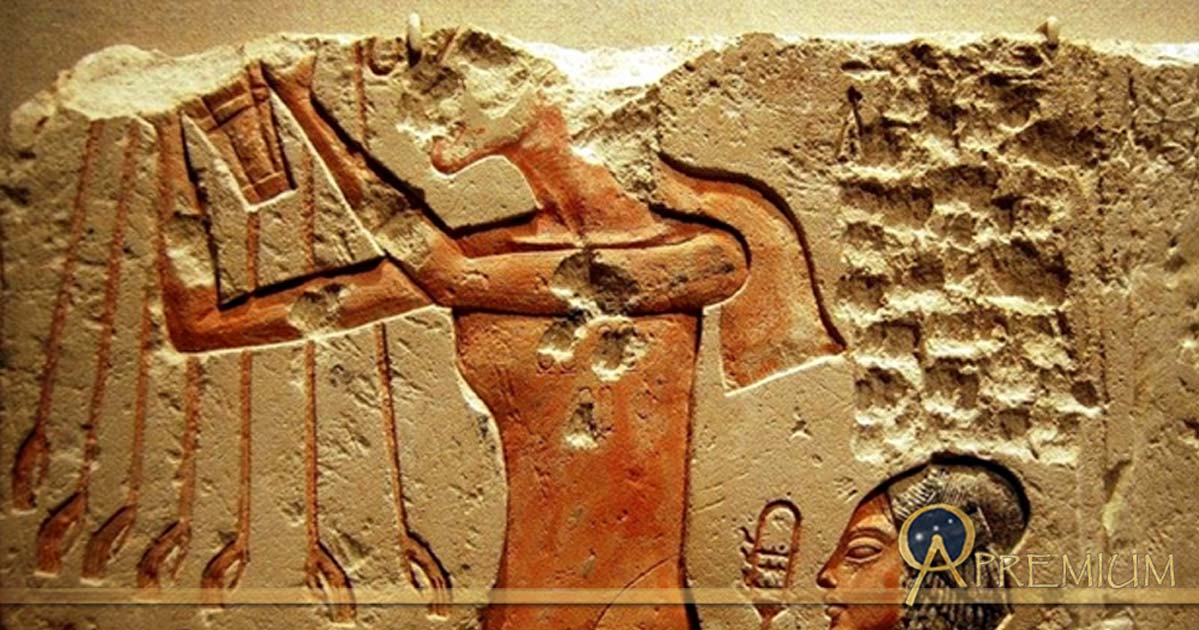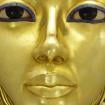Was Meritaten the Ephemeral Ankhkheperure? Death of Nefertiti and Succession Games in the Royal Court – Part II
Given the virtual lack of royal males who were old enough to rule, disarray over who would assume the throne after Akhenaten’s death seems to have plagued the Amarna family. Having accorded exceptional status to the women in his life, the Heretic had probably paved the way for one of them to assume control of Egypt in the years ahead. Did Nefertiti enjoy a period of co-regency with her husband; and did she later marry her eldest daughter symbolically to become sole pharaoh, before passing the throne onto her? Almost any of these scenarios could have been possible.

A fragment of a limestone column from the Great Palace at Amarna shows Nefertiti and her eldest daughter Meritaten adoring the Aten. The Queen wears the twin feathers of Shu and the ram’s horns upon her head. It is possible that Meritaten followed in her mother’s footsteps to become pharaoh. Ashmolean Museum, Oxford.
Did Meritaten Contact the Hittites?
An Amarna queen wrote a desperate letter to the Hittite king, Suppiluliuma I, requesting him to send a prince for her to marry – with the assurance that he would be king of Egypt. An incredible offer, but one that gave rise to much suspicion in the mind of the recipient. In the document, the scared widow – who was obviously being pressurized to wed soon – expressed disdain at the thought of marrying a ’servant’ – someone of lowly station than herself. But who was this ‘servant’ Dakhamunzu feared so greatly? Writing about the episode (known popularly as the Zannanza Affair), Jared Miller avers: “‘Servant’ is likely used in a disparaging manner, rather than literally, and probably with reference to real person(s) who indeed were being put forth as candidates.” Miller also offers the prominence of sun deities with the Hittite king as a motivating factor in the queen preferring a Hittite prince over a Babylonian.
- The Military Campaigns of Tiglath-Pileser III: Priest King and Conqueror – Part 1
- The Silence of Akhenaten: Was the Pharaoh Mute, Blind or Cultic?
- Legendary Riches: Commercial Gains, Trade and Tragedy During the Reign of King Solomon
A leading votary, French Egyptologist Dr Marc Gabolde’s theory about Meritaten being Dakhamunzu holds that she was elevated to the status of Akhenaten’s coregent in his final years; and her ploy to get the Hittite king to dispatch a son succeeded.
Like this Preview and want to read on? You can! JOIN US THERE ( with easy, instant access ) and see what you’re missing!! All Premium articles are available in full, with immediate access.
For the price of a cup of coffee, you get this and all the other great benefits at Ancient Origins Premium. And - each time you support AO Premium, you support independent thought and writing.
Independent researcher and playwright Anand Balaji is an Ancient Origins guest writer and author of Sands of Amarna: End of Akhenaten.
The author expresses his gratitude to Marcel Maessen, t3.wy Projects for granting permission to use exclusive photographs of rare Tutankhamun-era artifacts.
[The author thanks Heidi Kontkanen, Leslie D. Black, Julian Tuffs and Oliviero Piccinali for granting permission to use their photographs in this series. The public archives of the Metropolitan Museum of Art can be accessed here.]
Top Image: Top Image: Painted limestone block from Amarna shows Akhenaten worshipping the Aten; while his daughter, Meritaten, shakes a sistrum; design by Anand Balaji (Photo credit: Brooklyn Museum, New York); Deriv.
By Anand Balaji




















